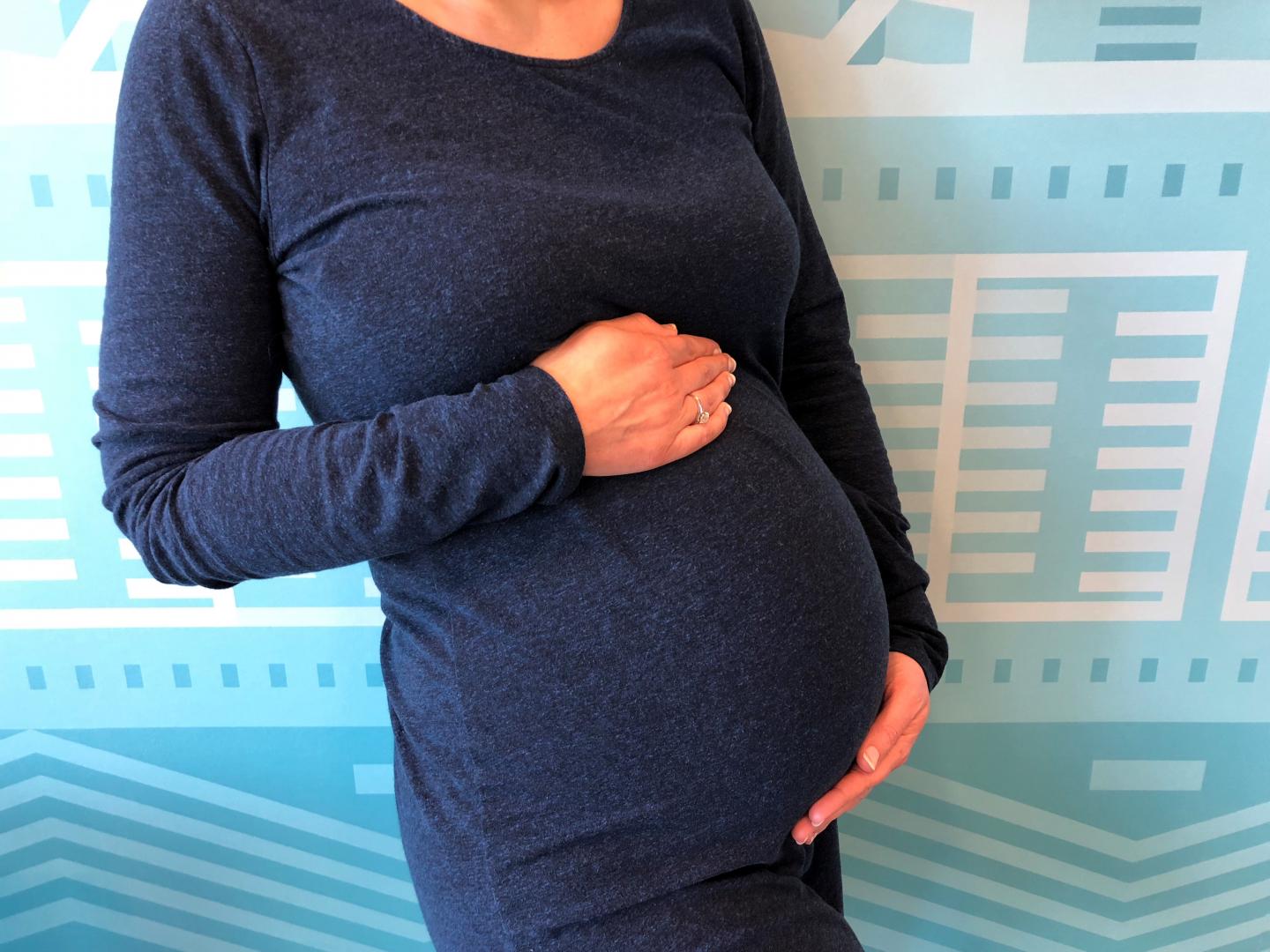A new observational study has begun to evaluate the immune responses generated by COVID-19 vaccines administered to pregnant or postpartum people. Researchers will measure the development and durability of antibodies against SARS-CoV-2, the virus that causes COVID-19, in people vaccinated during pregnancy or the first two postpartum months. Researchers also will assess vaccine safety and evaluate the transfer of vaccine-induced antibodies to infants across the placenta and through breast milk.
The study, called MOMI-VAX, is sponsored and funded by the National Institute of Allergy and Infectious Diseases (NIAID), part of the National Institutes of Health. MOMI-VAX is conducted by the NIAID-funded Infectious Diseases Clinical Research Consortium (IDCRC).
“Tens of thousands of pregnant and breastfeeding people in the United States have chosen to receive the COVID-19 vaccines available under emergency use authorization. However, we lack robust, prospective clinical data on vaccination in these populations,” said NIAID Director Anthony S. Fauci, M.D., “The results of this study will fill gaps in our knowledge and help inform policy recommendations and personal decision-making on COVID-19 vaccination during pregnancy and in the postpartum period.”
Pregnant people with COVID-19 are more likely to be hospitalized, be admitted to the intensive care unit, require mechanical ventilation, and die from the illness than their non-pregnant peers. Severe COVID-19 during pregnancy also may put the infant at risk for complications such as preterm birth. Individuals who are pregnant or breastfeeding can choose to receive authorized COVID-19 vaccines, and studies to gather safety data in these populations are ongoing. So far, COVID-19 vaccines appear to be safe in these populations. The NIAID study will build on these studies by improving the understanding of antibody responses to COVID-19 vaccines among pregnant and postpartum people and the transfer of antibodies to their infants during pregnancy or through breast milk. Experience with other diseases suggests that the transfer of vaccine-induced antibodies from mother to baby could help protect newborns and infants from COVID-19 during early life.
Investigators will enroll up to 750 pregnant individuals and 250 postpartum individuals within two months of delivery who have received or will receive any COVID-19 vaccine authorized or licensed by the U.S. Food and Drug Administration. Their infants also will be enrolled in the study. Vaccines are not provided to participants as part of the study protocol. Currently, three COVID-19 vaccines are available in the United States under emergency use authorization: the Moderna and Pfizer-BioNTech mRNA vaccines and the Johnson & Johnson adenoviral vector vaccine. The study is designed to assess up to five types of FDA-licensed or authorized COVID-19 vaccines, should additional options become available.
Participants and their infants will be followed through the first year after delivery. To assess the development and durability of vaccine-induced antibodies overall and by vaccine type and vaccine platform, researchers will analyze blood samples collected from pregnant and postpartum participants. These samples will be collected at study enrollment; at delivery for participants who enrolled during pregnancy; and two, six, and 12 months after delivery. Pregnant participants enrolled in the study prior to receiving the vaccine will have blood drawn at enrollment as well as approximately one month after vaccination. To assess transfer of antibodies through the placenta and the levels and durability of antibodies in infants, researchers will perform antibody testing on samples from umbilical cord blood collected at delivery and blood samples collected from infants two and six months after delivery.
Investigators also will assess the potential effects on maternal immune responses and transfer of antibodies across the placenta according to the mother’s age, the trimester of pregnancy during which the vaccine was received, the mother’s health, and the mother’s COVID-19 risk status. Additionally, mothers will have the option of providing breast milk samples at approximately two weeks, two months, six months, and 12 months after delivery. The investigators will evaluate breast milk antibodies to assess the potential for protection against COVID-19 in breastfed infants. Study staff also will gather information on COVID-19 illnesses in pregnant and postpartum participants, birth and neonatal outcomes, and COVID-19 illnesses in infant participants.
###
The work is led by principal investigators Flor M. Munoz, M.D., of Baylor College of Medicine in Houston and Richard H. Beigi, M.D., of University of Pittsburgh Medical Center. The study will be conducted at up to 20 clinical research sites nationwide. More information about the study, including a list of sites, is available on the IDCRC website.
NIAID conducts and supports research–at NIH, throughout the United States, and worldwide–to study the causes of infectious and immune-mediated diseases, and to develop better means of preventing, diagnosing and treating these illnesses. News releases, fact sheets and other NIAID-related materials are available on the NIAID website.
About the National Institutes of Health (NIH): NIH, the nation’s medical research agency, includes 27 Institutes and Centers and is a component of the U.S. Department of Health and Human Services. NIH is the primary federal agency conducting and supporting basic, clinical, and translational medical research, and is investigating the causes, treatments, and cures for both common and rare diseases. For more information about NIH and its programs, visit http://www.









































